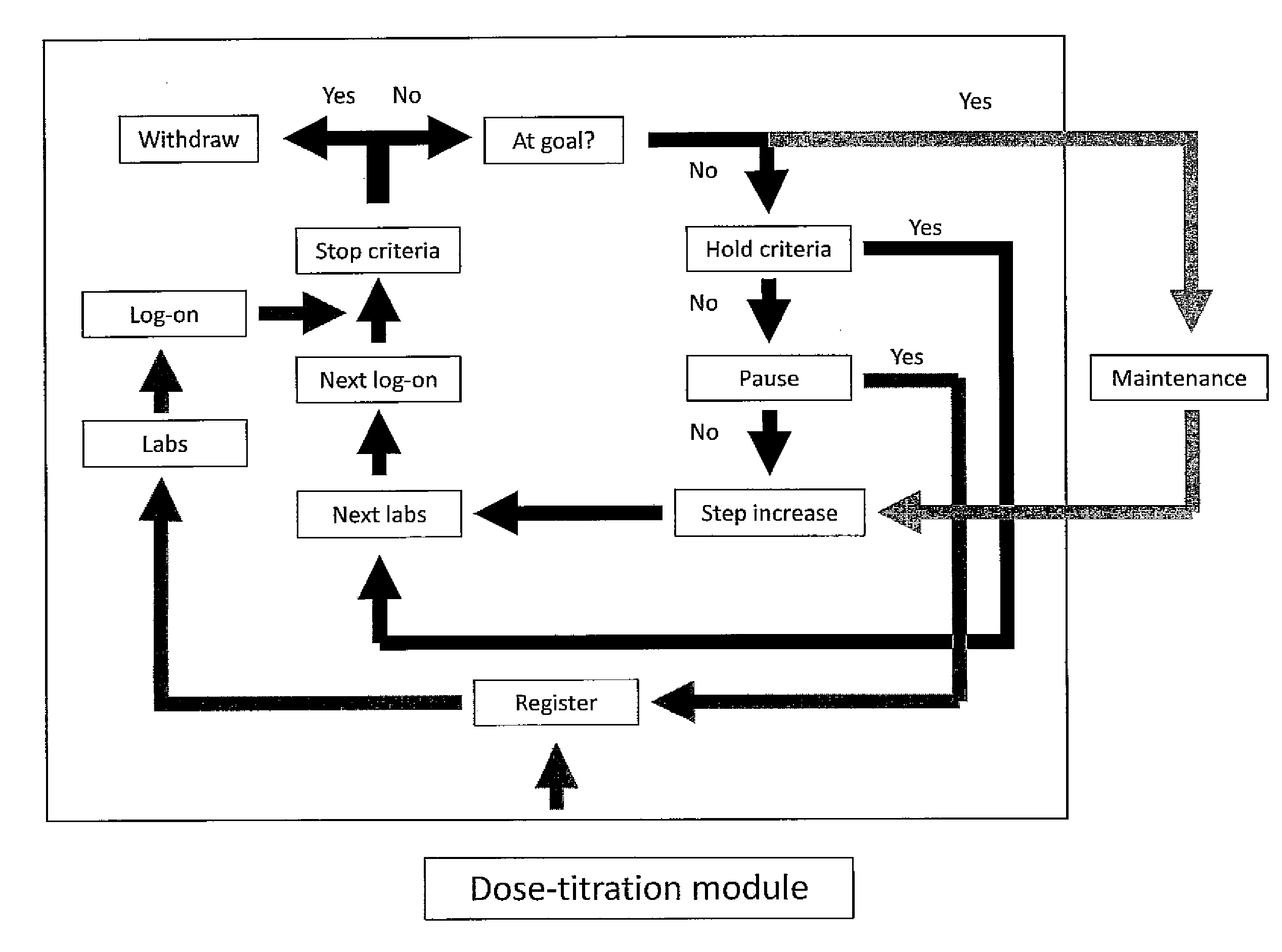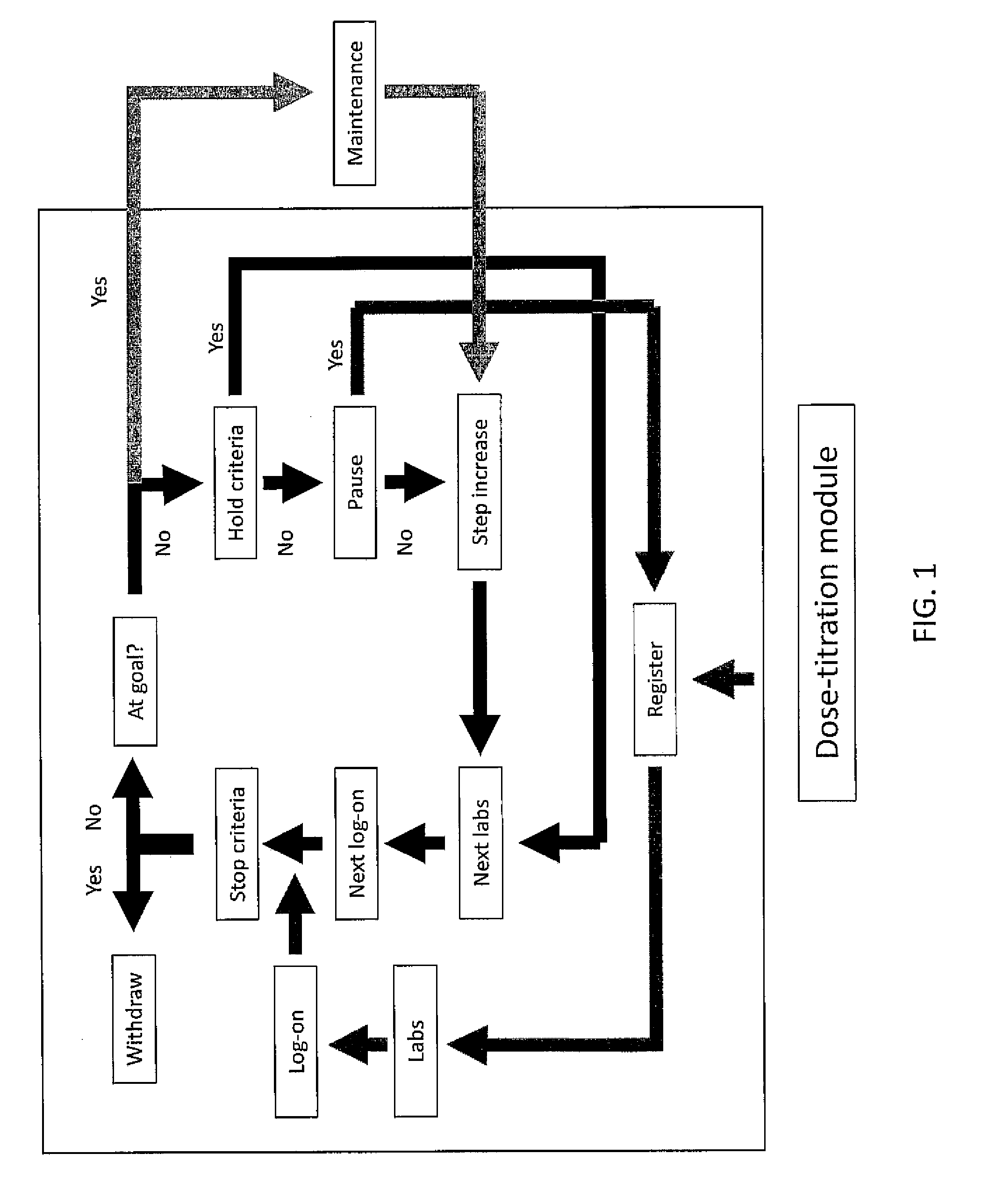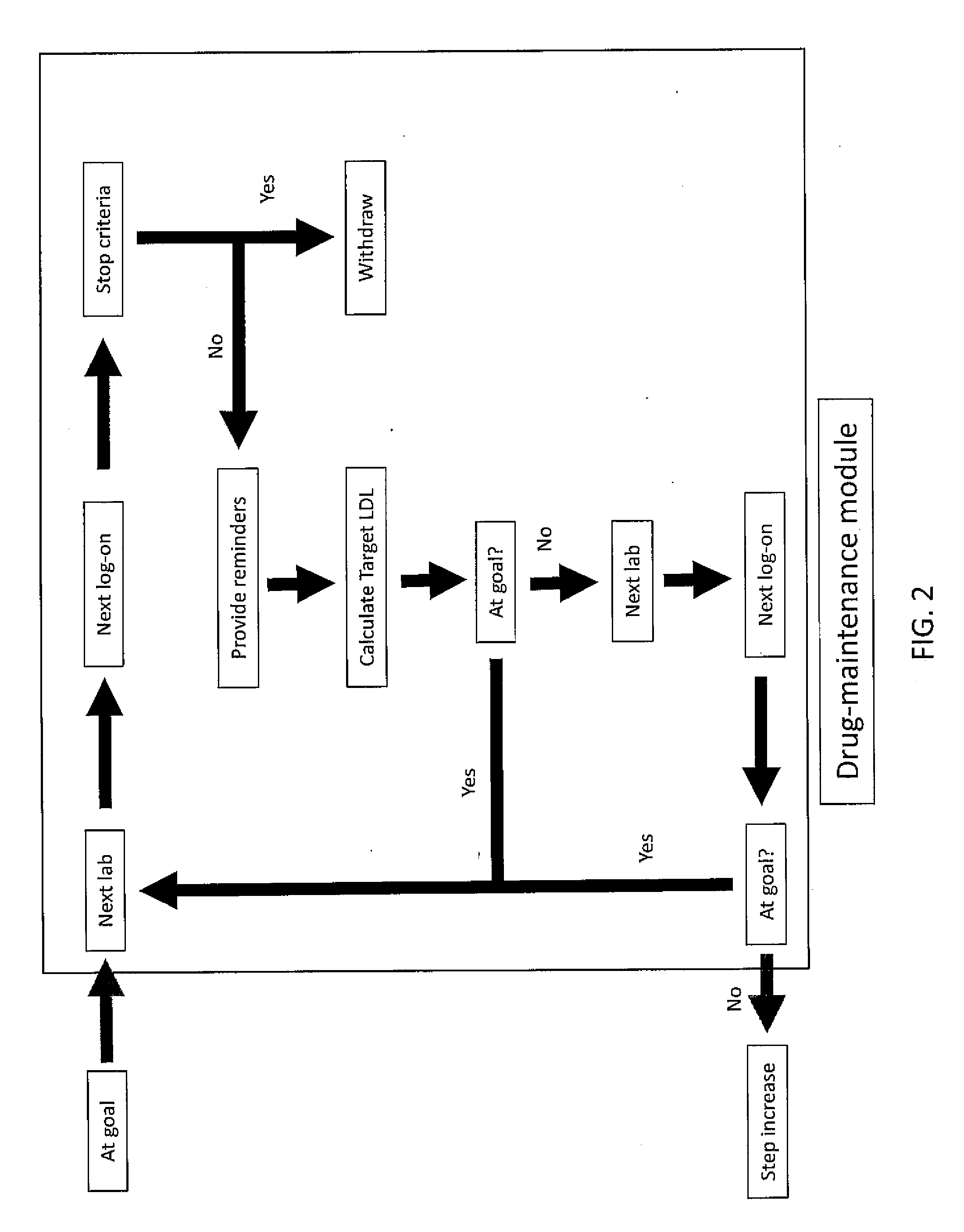Methods for predicting the response to statins
a statin and response technology, applied in the field of statins, can solve the problems of low patient adherence, clinical inertia, and up to half of cvd patients on statins not meeting their low density lipoprotein goal, and achieve the effect of optimizing the therapeutic efficacy
- Summary
- Abstract
- Description
- Claims
- Application Information
AI Technical Summary
Benefits of technology
Problems solved by technology
Method used
Image
Examples
example 1
I. Methods
[0031]A. Selection criteria—Patients were eligible for this study if they had a diagnosis of coronary artery disease (CAD) or its equivalent; had at lease one LDL above goal after the qualifying diagnosis; were prescribed a new statin or an increased dose of an existing statin ≦365 days after the LDL was measured; and had a repeat LDL measurement no less than 42 days after statin therapy was modified. They were excluded if they were treated with any other lipid-lowering drug classes, anti-retroviral drugs, or cyclosporine at any time. All subjects treated between FY 1996 and the end of the first quarter of FY 2009 (Jan. 1, 2009) were considered for this study.
[0032]A patient was considered to have CAD or its equivalent if: 1) the patient was given a discharge diagnosis of diabetes (International Classification of Diseases, 9th Revision (ICD-9) codes 250.00-250.93), coronary artery disease (410.00-414.9), atherosclerotic cardiovascular disease (429.2), cerebrovascular disea...
example 2
[0130]Statin Manager represents the convergence of two rapidly-evolving strategies—self management and Internet-based treatment. The underlying concepts have been validated for other conditions. This proposal integrates these approaches and extends their application to a substantial public health problem.
I. System Components
[0131]Stalin Manager will reside on a secured website on the internet. The system has a lock-out feature to prevent premature use of the algorithms. Based upon information provided at registration, the site generates a target LDL unless the primary care provider overrides this option (see Section V—Treatment Targets). The treatment algorithm is based on MicroMedex (an on-line pharmacy reference) and is designed to emulate best practices. A Dose Titration Module (Section VI) guides the patients through a series of questions, laboratory tests, and medication changes until they are either withdrawn from the protocol or achieve their target LDL. The site automaticall...
PUM
| Property | Measurement | Unit |
|---|---|---|
| Density | aaaaa | aaaaa |
| Density | aaaaa | aaaaa |
| Mass | aaaaa | aaaaa |
Abstract
Description
Claims
Application Information
 Login to View More
Login to View More - R&D
- Intellectual Property
- Life Sciences
- Materials
- Tech Scout
- Unparalleled Data Quality
- Higher Quality Content
- 60% Fewer Hallucinations
Browse by: Latest US Patents, China's latest patents, Technical Efficacy Thesaurus, Application Domain, Technology Topic, Popular Technical Reports.
© 2025 PatSnap. All rights reserved.Legal|Privacy policy|Modern Slavery Act Transparency Statement|Sitemap|About US| Contact US: help@patsnap.com



